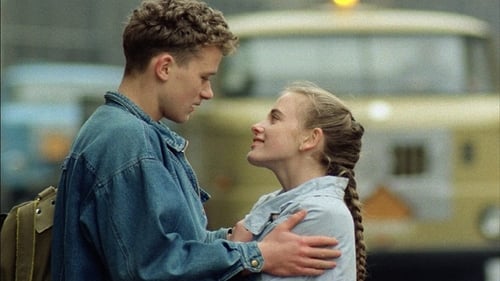
Director of Photography
„I began documenting their lives, if only because I hoped each film would have a happy ending.“ (Gerd Kroske)

Cinematography
There’s an oak tree that was familiar to everyone who used to drive along the highway just south of Berlin. Until 2004, it stood between the small suburban town of Ludwigsfelde and the intersection at Nuthetal. In the times of the German Democratic Republic (GDR), it took one hour to drive – in one of the famous East German “Trabant” cars – from the position of the tree to the East Berlin city center, which is why it was called the One-Hour Oak Tree. When the famous oak so steeped in history was cut down, the idea emerged to turn it into a sculpture.

Cinematography
With their border crossings, transit routes and their control by the “Volks-Polizei” (GDR police), with their concrete slabs and their history of construction, reaching back to the “Reichsautobahn” of the National Socialist era, the AUTOBAHN east stands as an example of German and German-German history. With a flair for anecdotes and situations, big politics and the small folks along the side of the road, Gerd Kroske has filmed a documentary, which refers back to the educational films of the transit police and footage of surveillance cameras of the state security and shows much more than a piece of “civil engineering” history.

Cinematography
Documentary by Gerd Kroske.

Director of Photography
Eisenstein is celebrated either as the last Leonardo da Vinci of modernity or attacked as Faustus, Faustus who made a pact with the devil. Whichever is the case, neither friends nor foes are able to resist the powerful draw of Eisenstein's work. He was a person of complexity who was understood in very different ways, as a generous cosmopolitan and a stingy hermit, a cynic and yet a highly sensitive, vulnerable being. The film deals with a number of phases in Eisenstein's life, and tries to get away from the orthodox image of him by using new material to shed a different light on his biography.

Cinematography
Gabi, Stefan and Henry used to work as street-sweepers for the city of Leipzig. A ruin is all that is left of the Municipal Street Cleaning Base of that time and the city Leipzig is moving after the reunion. The noise of air hammers are everywhere. Nowadays their daily routine has become fragile between social welfare office, pub, and their homes. There is always a remainder, something that doesn´t work out even.

Cinematography
14 years old Natalie seems to live in a completely healthy and wealthy family. However she feels lost: her parents spend most of their time for her younger, sick sister. So she grows more and more lonely. After an argument with her father she runs away from home. In her quest for care and nearness, she ends up with souteneur Nico.

Cinematography
Brest is not situated in Brittany. The terminus Brest is the frontier station between Belorussia and Poland. This place has seen many conquerors come and go. Therefore the terminus is a real and an anonymous space for telling about history and human fate.

Cinematography
Frank, a tenth grade student, falls in love with his classmate Regine. His father is a well-connected plant manager in the GDR; Regine's mother is a single parent with four children. Regine wants to become a kindergarten teacher, but her grades are poor and she is not allowed to apply for technical college. Frank champions her and seeks an open discussion about these rigid regulations. But his criticism is nipped in the bud.

Cinematography
Rüdiger Stein starts filming Klaus and Manuela, young expectant parents, for a documentary on the topic "Starting a Family." As the project threatens to fall apart, Rüdiger becomes personally involved in this family-to-be, an experience which enables him to open his eyes to his life and work.

Cinematography








